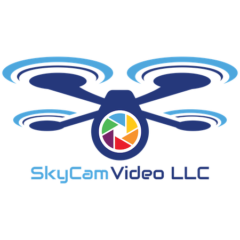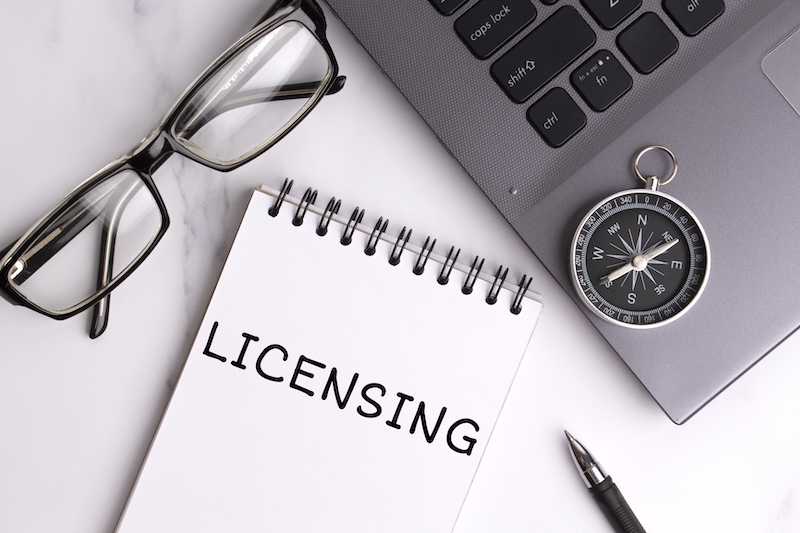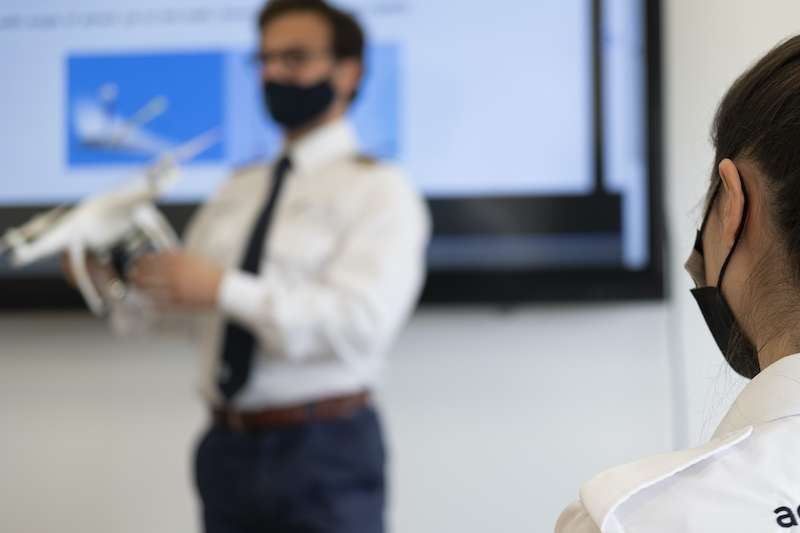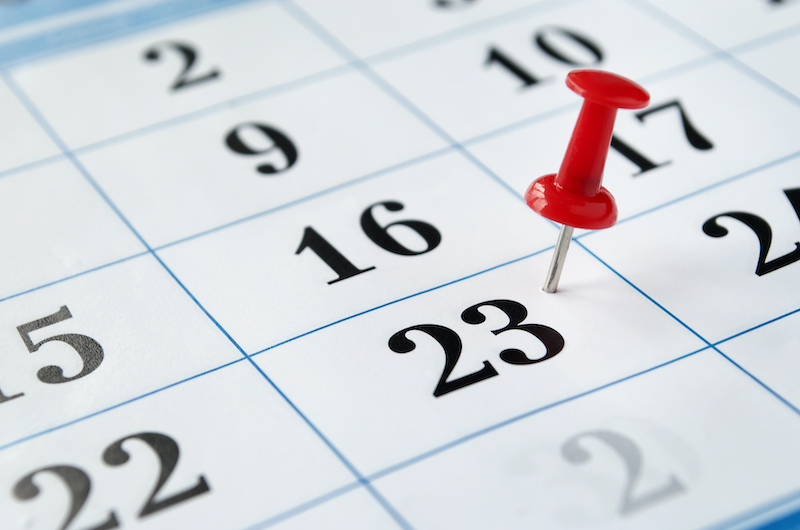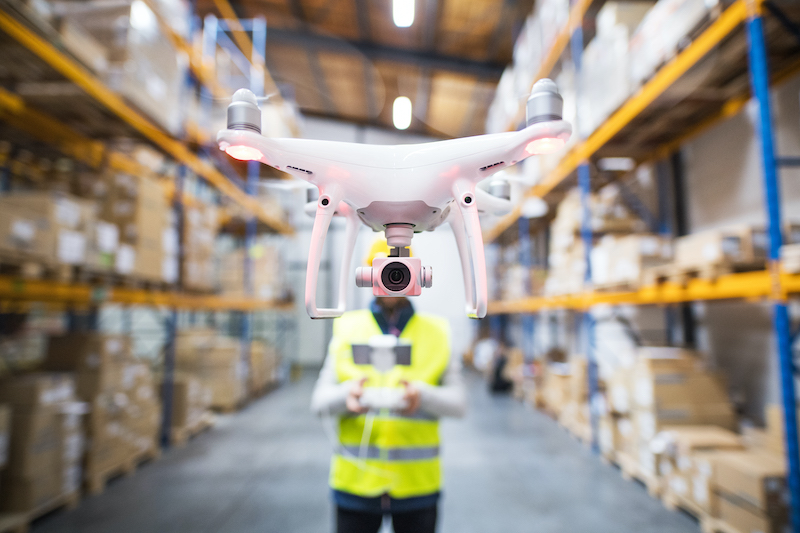
Commercial drone pilots are part of a rapidly growing industry, and as such, a drone license is becoming increasingly more important. Commercial drone pilots have exciting and most times high paying careers. Here we will outline everything you need to know to get your drone license and become a certified pilot.
The process of getting your drone pilot’s license is not as difficult as you might think, and if drone flying interests you, it will be an exciting journey. However, there are a few things you need to do to get started.
To get a pilot license you must be at least 16 years old. You must be able to read, write, speak, and understand English. You must also be in a physical, as well as a mental condition to safely fly a UAS.
The aeronautical FAA exam is designed to test your understanding of FAA regulations, drone flying principles, and safety procedures. The questions on the test will cover a variety of topics, such as airspace classification, UAS operations, and meteorology. There is a testing fee.
Once you have passed the FAA exam, you will need to apply for a small unmanned aircraft license certificate from the FAA. This process can be completed online, and once you have been approved, you will be able to apply for your drone license and start flying a drone commercially.
What is an FAA Part 107 certified drone pilot license?
An FAA Part 107 license or remote pilot certificate is a certification that allows you to fly drones commercially. Flying drones commercially (i.e. for commercial purposes, not recreational drone piloting) requires an FAA Part 107 remote pilot certificate. The drone license allows for you to fly any drone up to .55 pounds and less than 100 miles per hour.
The drone flying principles and safety procedures covered in 14 CFR 107 are vital for anyone looking to obtain a remote pilot certificate and become a licensed pilot. 14 CFR 107 is the section of the Federal Aviation Regulations that outlines the requirements for becoming a certified pilot.
Some of the topics covered in 14 CFR 107 include airspace classification, UAS operations, meteorology, and aircraft certification. It is important to understand all of these topics if you want a drone license. The aeronautical test is designed to test your understanding of these concepts, so you will become a great licensed pilot.
What are the basic rules of the FAA Part 107 certified drone pilot license?
The rules for flying a drone under the FAA Part 107 remote pilot certificate are fairly simple. You must always keep the drone in your line of sight, and you can only fly during the daylight hours. You are also not allowed to fly over people that aren’t part of the operation.
Keep the drone in your line of sight
Flying a drone within line of sight (VLOS) is one of the basic rules of FAA Part 107. This means that you must always be able to see the drone with your own eyes, and you cannot rely on binoculars or another drone to act as a spotter. A remote pilot can have a visual observer as part of the crew.
A visual observer is a person who helps the small unmanned aircraft license pilot keep the drone in their line of sight. The observer can be on the ground near the pilot in charge or at a different location. They should keep a close eye on the drone and notify the pilot if they lose sight of it. This rule is in place to keep everyone safe, and it’s important to follow it closely.
Don’t fly over 400 feet
Flying a drone over 400 feet can be dangerous, as it puts the drone in airspace that is typically reserved for manned aircraft. If you are caught flying a drone over 400 feet, you could face fines or even prison time. There are exceptions to when a commercial drone pilot can fly over 400 feet. But that will be for another article.
Just because you can legally fly up to 400 feet, you may not be able to because of other restrictions such as airports, air traffic, temporary flight restrictions, etc. It’s important to make sure flying your drone is legal before you take off.
Only fly during the daylight hours
As a commercial drone pilot flying a drone during the daylight hours is one of the basic rules of FAA Part 107. This means that you must only fly your drone during the daytime, and you should avoid flying in the evening or early morning when the sun is low in the sky.
Flying a drone during the civil twilight hours is one of the basic rules of FAA Part 107. This means that you should avoid flying your drone during the evening or early morning when the sun is low in the sky. The civil twilight hours are the period immediately before sunrise and after sunset when there is still some light in the sky.
The new rules now say that you can fly your drone at night. When flying a drone at night, it is important to use a light that can be seen from 3 nautical miles away.
This will help you stay safe and avoid any accidents. Using a light that can be seen from far away is the best way to ensure that you will be able to see your drone at all times.
Don’t fly over people that aren’t part of the operation.
When flying a drone over people, it is important to remember that you need their permission. In some cases, you may even need to get permission from the government.
Don’t fly over busy areas or large crowds of people. If you’re not sure if it’s safe to fly over a certain area, don’t do it. There have been changes to the FAA Part 107 regulations where operations over people are permitted, subject to the drone falling into 1 of 4 categories. This is a topic for another blog.
Do you need to own a drone to get a remote pilot certificate?
To qualify for a UAS pilot’s license, you don’t need to own a drone. As long as you meet the other requirements.
However, if you do own a drone, you will be able to practice flying it and become more comfortable with its controls before taking your test. These are the requirements to get a drone license.
Who is required to have a remote pilot certificate?
Anyone who wishes to operate a drone as a commercial pilot needs a remote pilot certificate from the FAA. A commercial pilot is someone who flies a drone for the money. The FAA has also made the statement of “in furtherance of businesses”, who wish to use drones for commercial purposes.
This could include aerial photography, real estate videos, inspections of pipelines and power lines, to surveying and mapping. The statement emphasizes that those who operate drones for business reasons must hold a remote pilot certificate.
What are the requirements to get an FAA Part 107 remote pilot certificate
To get your remote pilot certificate, you will need to be at least 16 years old. You must be able to read, write, speak, and understand English. You must also be in a physical and mental condition to safely fly a UAS. You will also need to pass an aeronautical test. This test will cover a variety of topics, such as airspace classification, UAS operations, and meteorology. Let’s look at each requirement individually.
You will need to be at least 16 years old
The FAA has set the minimum age for pilots at 16 to ensure that small unmanned aircraft license pilots are sufficiently experienced and knowledgeable to pilot drones safely before they get a drone license. The age requirement is also in place to ensure that drone pilots are mature enough to understand and follow FAA regulations.
16 is the age at which most people can obtain a driver’s license, so it makes sense that the FAA would require drone pilots to be at least 16 years old. To be a UAS pilot.
You must be able to read, write, speak, and understand English
Drone flying is a complex activity that involves following a variety of FAA regulations. To be a UAS pilot, you need to be able to read, write, speak, and understand English. This will allow you to understand all of the regulations that certified drone pilots are required to follow, once they get a drone license.
It will also allow you to communicate with other UAS pilots and air traffic controllers in case of an emergency. Being able to speak English is especially important, as you may need to provide instructions to air traffic controllers in the event of an emergency.

You must also be in a physical, as well as mental condition to safely fly a UAS
To be a UAS pilot, you must be in a physical, as well as a mental condition to safely fly a drone. This means that you must be able to see and understand your surroundings, respond to instructions from air traffic controllers, and make quick decisions in the event of an emergency.
Drone flying can be a complex activity, so you need to be able to think clearly and respond quickly to fly a drone safely. You also need to be in good physical health so that you can handle the stress of drone flying.
You will also need to pass an aeronautical test
To become a certified UAS pilot and fly drones commercially, you will need to pass an aeronautical knowledge test. This test will cover a variety of topics, such as airspace classification, UAS operations, and meteorology.
The test is designed to ensure that UAS pilots are knowledgeable about the regulations and procedures outlined in 14 CFR 107. Understanding all of the concepts covered in 14 CFR 107 is vital for anyone looking to obtain a remote pilot certificate.
The aeronautical knowledge test for a commercial UAS pilot license is important because it ensures that remote pilots are safe and knowledgeable when flying drones commercially. Passing the test will demonstrate that you understand how to fly drones safely and comply with FAA regulations.
Is the remote pilot certificate test hard?
The commercial drone operators test is not easy because it is based on a comprehensive understanding of drone controls and regulations. You will need to be familiar with airspace classifications, weather conditions, and UAS operations.
To pass the test, you will need to know how to fly your drone safely and responsibly. To study, we recommend UAS pilot training courses and remote pilot test preparation books.
Remote Pilot 101 is an excellent online training course because it provides a comprehensive understanding of drone controls and regulations. It also happens to be the course that helped me pass my FAA Part 107 test, the first time and in 7 days.
The course is designed to help you pass the UAS pilot test with flying colors. In addition, the course covers all aspects of safe and responsible UAS operations. If you’re looking for an excellent UAS pilot training course, look no further than Remote Pilot 101!
How many times can you take the drone test?
There is no limit to the number of times you can take the drone test, but the FAA requires pilots to wait at least 14 days before retaking the drone knowledge test. One of the reasons why the FAA requires pilots to wait at least 14 days before retaking the drone knowledge test is because they want to ensure that pilots are taking the test seriously.
They want to make sure that pilots are aware of the rules and regulations that apply to flying drones, and that they are prepared to safely operate a drone.
Is every test is different?
Although the pilot test is not easy, every test is different. This means that you may have a different experience when taking the test than someone else. It’s important to remember that everyone studying for the test will have their strengths and weaknesses. What works for one person may not work for another person.
There is no one-size-fits-all approach to studying for the UAS pilot test. Some people may prefer to read UAS pilot test preparation books, while others may prefer to take UAS pilot training courses. It’s important to find an approach that works best for you and stick with it.
The key to passing the UAS pilot test is practice, practice, practice! The more you study and practice, the better your chances of passing the UAS pilot test.
If you’re looking to get your drone license, make sure to check out RemotePilot 101’s remote pilot certificate training course! The course covers everything from drone controls and regulations to UAS operations in a variety of different scenarios. In addition, the course will prepare you for what it is like to take a Part 107 drone test.
What’s on the UAS pilot test?
The UAS pilot test is a comprehensive exam that covers a wide range of topics related to drone operation. Some of the key areas covered in the test include airspace classification, drone operation, emergency procedures, and weather. Let’s look at some of the key topics.
Airspace classification
Airspace classification is one of the most important concepts you need to understand to become a UAS pilot. The Federal Aviation Administration (FAA) has designated different types of airspace to accommodate different types of aircraft. There are six classes of airspace: A, B, C, D, E, and G.
Drone operations
The UAS pilot test will also cover UAS operations. This section will include information on how to safely operate your drone in different types of airspace. You will also learn about drone loading and weight limitations. You will also be asked to identify emergency procedures, such as drone battery failure.
Emergency procedures
One of the most important sections of the UAS pilot test is emergency procedures. This section will cover what to do in the event of an emergency, such as a drone crash or loss of communication. You will learn about the steps you need to take to ensure the safety of yourself and others.
Weather
The UAS pilot test will also cover weather-related topics, such as wind speed and direction, air pressure, and runway winds. You need to understand these concepts to fly your drone safely.
Metars and TAFs are two types of weather reports that drone pilots need to be familiar with. Metars are airport weather reports, and TAFs are terminal area forecasts.
They both contain important information about the weather conditions at an airport or in a specific area. You will need to know how to read and interpret these reports to pass the drone pilot test.
How long is the FAA drone test?
The drone pilot test is a 60-question exam that you take on a computer at an FAA-approved testing center. While you get 120 minutes to take the test, the test can be completed by most drone enthusiasts in less than 30 minutes. A passing score on the drone pilot test is 70 percent or better. You will be given a score of a pass or fail.
How to study for the drone license test
The FAA part 107 test is not difficult to pass if you prepare for it. The test covers a wide range of topics, including drone safety, drone operation, airspace, and more. To pass the test, you will need to have a strong understanding of all these topics.
To prepare for the drone pilot’s license test, it is recommended that you study as much as possible. You can use drone pilot guides, drone pilot books, drone pilot apps, and drone pilot training courses to prepare for the test.
One way to study for the test is to take an online course. These courses will teach you everything you need to know about drone operation and how to stay safe while flying. Another option is to read the FAA’s Remote Pilot – Small Unmanned Aircraft Systems Study Guide.
Where can I find drone license test questions and answers?
Finding the FAA Part 107 test questions and answers can be a daunting task. However, there are a few resources that you can use to help you study for the test. The first place to look is the FAA’s website.
They have a section on their website that is dedicated to the Part 107 test. They provide a study guide and practice tests that you can use to help you prepare for the test.
Another great resource for finding Part 107 test questions and answers is YouTube. Several drone pilots have created videos that cover the entire test. They provide detailed explanations of each question and answer, so you can be sure that you are prepared for the test.
Where do I take the test for the remote pilot certificate?
The FAA drone pilot test can be taken at an FAA authorized testing center. The centers are located nationwide. To find a FAA authorized testing center near you, visit the FAA website and enter your zip code. The cost to take the testing fee $175.
How do I register to take the remote pilot certificate test?
Step 1
You must obtain an FAA Tracking Number (FTN) To obtain an FAA Tracking Number (FTN), you must create an integrated airmen certification and rating application.(IACRA). This can be done using the FAA form online.
You’ll need to provide your name, date of birth, and email address. You will also need to create a login and password. You must do this before registering for the knowledge test
Step 2
Once you have created your FTN, you will need to schedule an appointment with an FAA-approved knowledge testing center. Most major metropolitan areas have a center. To find a testing center near you, go to the FAA website and type in your zip code.
When you register for your test, you will be given a 17-digit Knowledge Test Exam ID. This number is unique to you and will be used to identify you on test day. You must bring this number with you to the test center.
What do I bring on test day?
When you arrive for your test, you will need to provide your name, date of birth, and FTN. You will also need to show your driver’s license. You can also bring a basic calculator. The test facility will provide you with the scratch paper if you need it.
How to get your drone pilot’s license
Once you have passed the drone pilot knowledge test, you are ready to apply for your FAA Part 107 remote pilot certificate. The process is simple and can be completed online. You’ll need to sign on using the login and password that you already created in (IACRA).
Next, you will need to complete the integrated airmen certification and rating application (IACRA). You will also need the 17-digit Knowledge Test Exam ID during the process.
Applicants for the FAA Part 107 remote pilot certificate must complete a security background check. The TSA will use the information provided on the IACRA application to conduct the background check.
A confirmation email will be sent when an applicant has completed by the TSA. It will have information on how to print a temporary remote pilot certificate or temporary drone pilot license from IACRA.
After the successful completion of your TSA background check, your commercial drone pilots certificate will be sent to the applicant by mail. The process of getting your permanent remote pilot certificate will take a few weeks. Until then carry your temporary drone pilot license with you when you fly. The certificate will be valid for 2 years.
In conclusion
An FAA Part 107 drone pilot’s license is required to operate a drone for commercial purposes. You will need to be at least 16 years old. You must be able to read, write, speak, and understand English. You must also be in a physical, as well as a mental condition to safely fly a UAS.
You will also need to pass an aeronautical knowledge test that covers drone operations, weather-related topics such as wind speed and direction or air pressure, airspace classification for different types of aircraft, emergency procedures in case of a drone crash or loss of communication with the drone controller. The exam is 60 questions long and has a passing grade requirement of 70%.
You can take the UAS pilot test at an FAA-approved testing center. Once you have passed the UAS pilot knowledge test, you can apply for your FAA Part 107 remote pilot certificate online. A security background check is conducted by TSA as part of the application process.
After completing all steps in the application process, you will receive your permanent remote pilot certificate in the mail within a few weeks. If all this sounds overwhelming – don’t worry!
The Remote Pilot 101 course can help, the course includes everything needed for success on the FAA Part 107 remote pilot certificate. Happy Flying with your new FAA Part 107 drone pilot license and welcome to the world of FAA certified drone pilot.

